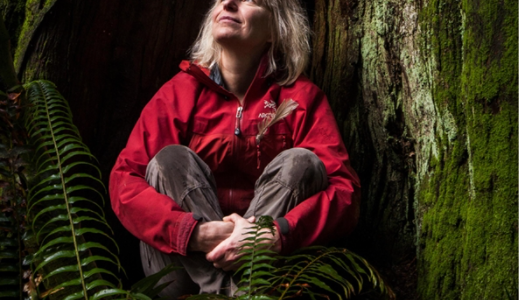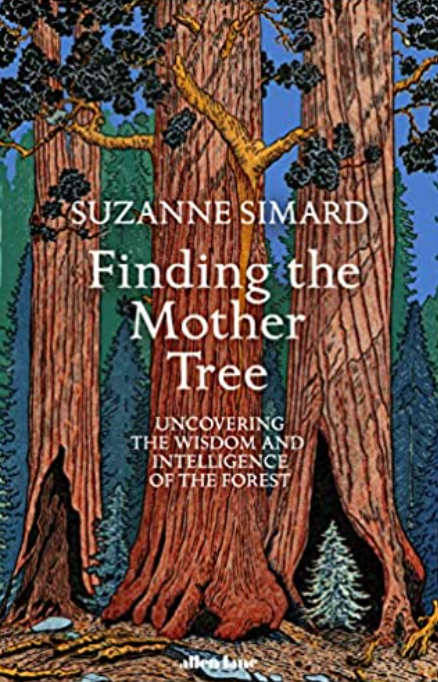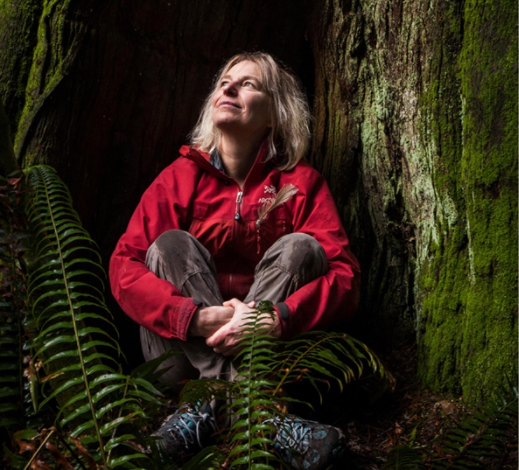
Web of fungi and Mother tree


Suzanne Simard, the ecologist who first discovered the hidden language of trees and shares the secrets of a lifetime spent uncovering startling truths about trees and their cooperation, healing capacity, memory, wisdom and sentience.
Professor Simard, raised in the forests of British Columbia, where her family lived for generations, did not set out to be a scientist. She was working in the forest service when she first discovered how trees communicate underground through an immense web of Fungi, at the centre of which lie the Mother Tree, the mysterious, powerful entities that nurture their kin and sustain the forest.
Finding the Mother Tree reveals how the complex cycle of forest life on which we rely on our existence, offers profound lessons about resilience, and kinship and most importantly must be preserved before it’s too late, but deeply connected with out humanity.
As a child, Simard used to eat earth, especially the humus from the base of white barked beech that attracted worms who missed the decomposing plant matter with underlying soil. “The more worms, the richer and tastier the humus” she recalls.
In the forests of western Canada, she and her siblings foraged for mushrooms and huckleberries while her grandfather and uncles worked as loggers, selectively harvesting cedars, white pine, and Douglas fir. She was put to work on commercial forestry, the process of clear-cutting large areas of old growth forest and planting individual pine and birch seedlings in regimented rows, with the assumption that the trees would grow faster, taller and stronger without any competitors.
But they were more vulnerable to disease and climatic stress than the older trees, who shared their patch of soil with other plant, mosses, firs and associated life forms.
She concentrated on Douglas firs, giant trees that provided valuable wood to the logging companies. One in ten of the new plants invariably got sick and died whenever new aspen, paper birch and cottonwood were removed.
She found that underground trees and fungi form partnerships called mycorrhizas.
Thread-like Fungi envelope and fuse with tree roots, helping them extract water and nutrients in exchange for carbon-rich sugars that the trees make through photosynthesis.
In the male dominated world of commercial logging Professor Simard was arguing that clear-cutting was not just bad for the ecosystem but also less efficient got short shrift. After years of experiments the facts continued to bear out her hypothesis, experiments went wrong and trees died. She spent more than an hour up a tree while a mother grizzly bear and her cubs circled below. Her marriage to a husband yearning for a quieter life and death of her elder brother. Simard uses methods developed by native Americans to boost soil quality and ward off bugs and weeds. He understanding of the ecosystems are intimately bound up with ours “ they’re built on relationships. The stronger those are, the more resilient the system” According to her the forest is like internet, but instead of computers linked by wires and radio waves the trees are connected by fungi. There are centres and satellites with the oldest trees as the biggest communication hubs.
The seedlings can emerge in clear ground, she writes. “they have been nurtured underground by the other trees, waiting for their moment t start growing. They are being fed by the mother trees, the central hub that siblings and the seedlings sprung from, with threads of different fungal species of different colours and weights, linking them layer upon layer in strong complex web.”
Simard found that trees support each other in times of stress, drought or disease, they can also communicate needs and in return send supplies.
Simard reveals the complex cycle of forest life- on which we rely for out existence.
Finding the Mother Tree: Uncovering the Wisdom and Intelligence of the Forest by Suzanne Simard, Allen Lane, £20/ Knopf $28.95, 365 pages.
